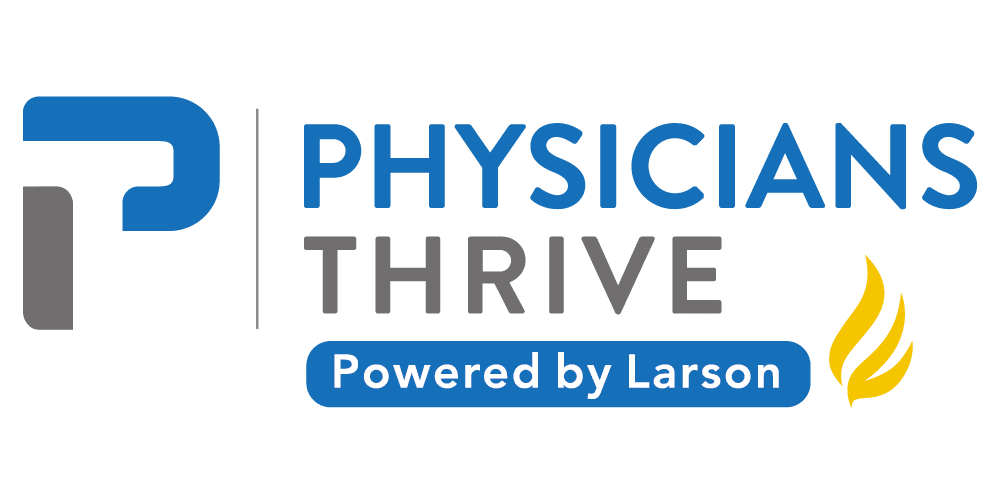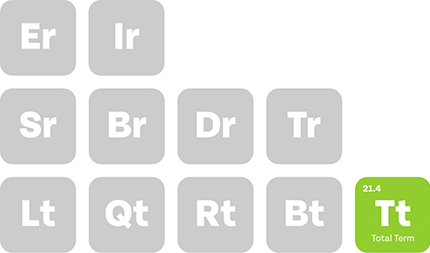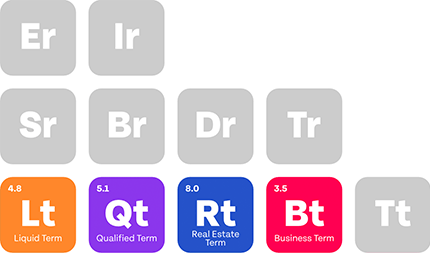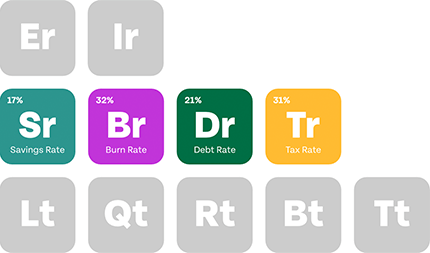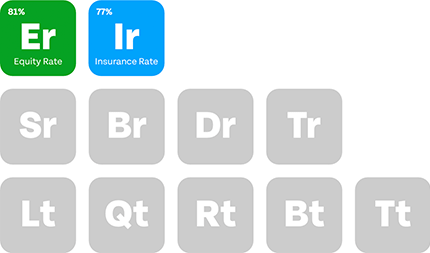Your home is probably the biggest investment you’ll ever make in your lifetime.
With your high income as a physician, you may still be unable to shell out the entire sum in one go without needing a mortgage.
Whether you’re opting for a loan or refinancing, understanding how mortgage rates work can help you get the best deals from your mortgage lender.
Here’s what you should know about mortgage rates, their determining factors, and tips to help you find mortgages with low rates.
Key Takeaways
- Mortgage rates are lender fees that vary based on loan type and term.
- Fixed-rate mortgages offer stability, while adjustable rates can fluctuate unpredictably.
- Factors like credit score, down payment, and economic trends affect mortgage rates.
- Refinancing or locking rates can help reduce costs depending on current market conditions.
Table of Contents
What Are Mortgage Rates
Mortgage rates are the percentage fees that lenders charge on home loans. The interest on the loan is paid in installments, along with the monthly mortgage payment, rather than being paid out in one go.
Your loan repayment term and the type of mortgage you’ve taken out both affect your monthly interest rates.
There are two kinds of mortgage rates:
Fixed-Rate Mortgage
This type of mortgage gives a fixed interest rate throughout the loan term.
Your monthly payments stay consistent, and you’re protected against the impact of interest rate changes.
Still, if the market rate falls, you’ll end up paying higher monthly mortgage payments and be unable to take advantage of the change.
Fixed-rate mortgages usually come in 15, 20, or 30-year terms.
For instance, if you take out a 30-year fixed-rate mortgage with a 6% interest rate, the rate stays the same for this duration, except if you sell or refinance your home.
Adjustable-Rate Mortgage
As the name implies, an adjustable-rate mortgage is flexible. Its interest rates may change periodically after starting at a consistent introductory rate.
For example, if you get a 5-1 adjustable-rate mortgage at an introductory rate of 6%, you’ll pay 7% interest for the initial five years.
Then, the mortgage payments adjust once annually for the last 25 years of the term.
This type of mortgage is usually based on indexes such as the U.S. Treasury rate or the LIBOR (London Interbank Offered Rate), including a margin set by the lender.
Adjustable-rate mortgages have typically lower initial interest rates compared to fixed-rate mortgages.
You’ll make a lower monthly payment if the rates are lowered or stay the same.
Still, predicting future costs during your loan term can be difficult, making it hard to budget your monthly repayment.
What’s the Relationship Between Mortgage Rates and APR?
Mortgage rates and APR (Annual Percentage Rate) refer to loan interest rates, but that’s where the similarity ends, as they provide different information about the loan.
Your mortgage rate is a component of the figure that makes up the annual percentage rate (APR), meaning that your APR is usually higher than the mortgage rate.
Mortgage interest rates refer to the cost of borrowing a specific sum from a lender. It’s also the rate that determines your interest payment and monthly principal.
APR is a broader measure of the cost of borrowing, including mortgage rates and additional fees like:
- Loan origination fee
- Private mortgage insurance
- Lender application and processing fees
- Discount points
- Closing costs
For example, if you take out a mortgage at a rate of 3.5%, this is the interest rate you’ll pay on the loan balance.
Still, the APR might be higher if you incur origination fees or closing costs, which take up the overall rate.
APR gives you a complete picture of the loan cost, while mortgage rates affect just your monthly payments.
Today’s Average Mortgage Rates
Here are the average mortgage rates at the time of writing this article,
| Product | Interest Rate | APR |
| 30-year fixed rate | 6.79% | 6.84% |
| 20-year fixed rate | 6.57% | 6.63% |
| 15-year fixed rate | 6.11% | 6.19% |
| 10-year fixed rate | 6.01% | 6.08% |
| 5-1 ARM | 6.32% | 7.10% |
| 10-1 ARM | 6.73% | 7.24% |
You can use an online mortgage rate calculator to see how different rates affect your monthly payment.
Factors Affecting Mortgage Rates
Mortgage rates are impacted by different factors, including:
1. National Monetary Policy
The single most important factor affecting mortgage rates is the national interest rate benchmark.
In the U.S.A., the Federal Open Market Committee, a subdivision of the Federal Reserve, determines monetary policy, which includes setting interest rates.
The “Feds” meet eight times annually and vote to keep interest rates the same, hike them, or cut them.
When the Federal Reserve increases interest rates, mortgage rates typically rise to reflect the increased cost of borrowing.
With interest rate cuts, borrowing becomes more affordable.
2. Economic Conditions
In a strong economy, the demand for loans increases, pushing rates higher.
During periods of economic downturn, the demand for loans reduces, reducing mortgage rates and borrowing costs.
For instance, one of the economic impacts of the COVID-19 pandemic was the falling of mortgage rates to an all-time low of 2.65% (reached in January 2021).
Inflation also plays a big part, with mortgage rates rising to adjust to inflation in 2022.
That year, the 30-year average mortgage rate increased from 3.22% in January to 7.08% at the end of October.
When inflation rates are lower, mortgage rates drop to reflect the reduced need for homebuyer loans.
3. Credit Risk and Score
Your credit score and overall credit risk can affect your mortgage and monthly payment.
Lenders are more likely to offer reduced rates to people with low debt-to-income ratios.
If your credit score is 740 or more, you can look forward to lower mortgage rates, while borrowers with low credit scores (less than 620) face higher mortgage rates
4. Loan Type and Term Length
If you opt for a 10, 15, or 30-year fixed-rate mortgage, the rate tends to be higher because you can’t take advantage of industry changes, such as interest rate cuts or reduced inflation.
With an adjustable-rate mortgage, the initial rates are often high, but depending on market conditions, they may reduce after the introductory period.
Also, short-term mortgages, such as 15-year terms, tend to carry lower interest rates due to lenders’ perceived reduced risk.
The rates go up with longer terms, e.g., 30 years.
5. Down Payment
Your down payment also affects your mortgage rate. The bigger the down payment, the lesser is the perceived risk for the lender.
For instance, if you make a down payment of as much as 20%, you may be able to secure a better interest rate, allowing you to avoid private mortgage insurance.
Lower down payments might lead to lenders charging a higher interest rate. You may also be required to pay private mortgage insurance.
Should You Refinance Your Home?
With mortgage rates having dropped in recent months, you might be tempted to swap your current interest rate for a new one to refinance your home.
Almost 60% of homebuyers in the U.S.A. have mortgage rates less than 4$, meaning they may not need to refinance their loan.
But, if you took out your mortgage at a higher rate or have a worrying debt-to-income rate, now’s the time to cut your monthly payment potentially.
Still, you should note that refinancing isn’t cheap, as closing costs drive up the APR. You should compare costs with various mortgage lenders to get the best rates.
You can also opt for a mortgage reset to have your interest rates reflect ongoing mortgage rate trends, which some credit unions and banks allow.
This option comes with a flat fee and can be a convenient alternative to refinancing.
Tips to Get Lower Mortgage Rates
High lender fees can impact your ability to repay your mortgage. Here are some tips to help you get low mortgage rates:
- Improve your credit score by paying down credit card balances and avoiding taking on new debt
- Cut unnecessary expenses and save for larger down payments
- Consider short-term mortgages to pay less interest overall
- Lock in your current mortgage if there’s strong evidence that interest rates will rise
- Pay for discount points if you can afford it, as a point costs 1% of your loan amount but reduces your interest rate by 0.25
- Compare current mortgage rates for the best deals in the housing market
Mortgage Rate Forecast and Trends for 2025
The Federal National Mortgage Association’s most recent forecast indicates that the average cost of a 30-year fixed-rate mortgage will drop to 6.30% by the end of 2025.
A similar prediction is shared by the Mortgage Bankers Association
The National Association of Realtors forecasts rates to drop even further to 5.8% toward the end of 2025.
Regardless of mortgage rate changes, the need to move remains constant, whether you’re planning to downsize in retirement or relocate for a new job.
The realities of physicians’ career paths require a robust financial planning system, whether for financing student debt, buying a new home, or setting up a private practice.
Finance Your Home in the Optimal Way
As a physician, your high income grants you access to favorable loan rates from lenders.
Understanding your mortgage options is the first step to financing your home, staying ahead of loan repayments, and eventually becoming debt-free.
Let the experts at Physicians Thrive guide you through the dynamics of the housing market, helping you find favorable mortgage terms and planning for financial security.
Contact our experts today!

